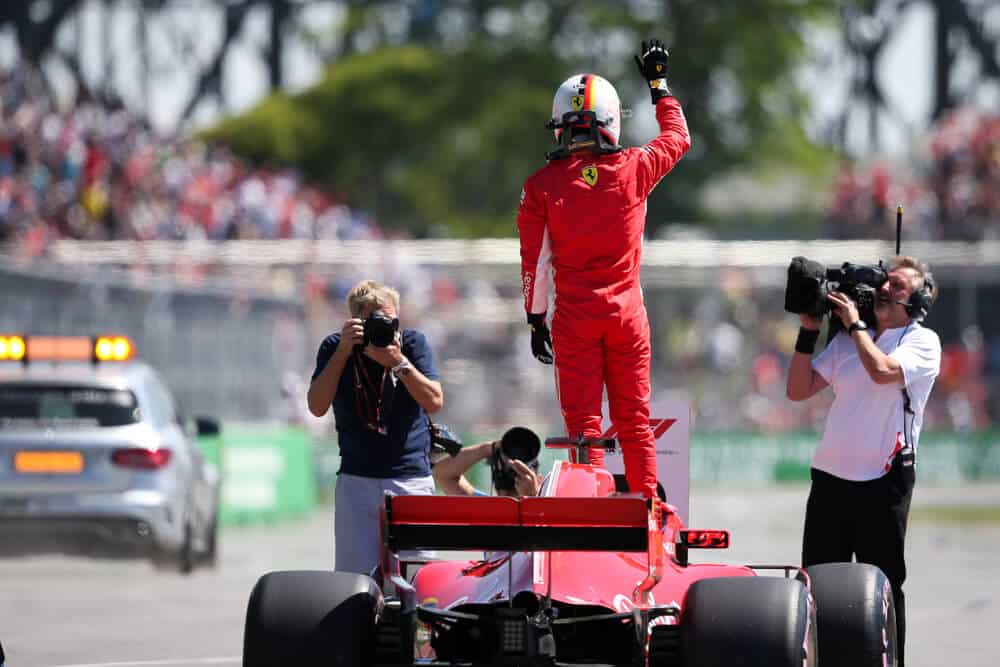The Halo is a safety device used in Formula One Racing to protect drivers from dangerous incidents. It was introduced in 2018 and consists of a curved bar that surrounds the cockpit and is attached to the chassis of the car. The Halo offers an additional layer of protection to the driver’s head and neck. It’s an essential element in the sport’s modern safety measures.
Its introduction followed a series of serious accidents, including the loss of French driver Jules Bianchi in 2015. Since then it has been widely adopted across all levels of motorsport. The Halo may not be the most aesthetically pleasing addition to the sport, but it has proven to be a crucial one, ensuring the safety and well-being of the drivers.
Table of Contents
Watch this video to learn more about the halo in F1.
Technical Aspects of the Halo
The design and materials used in the halo
The Halo is made of titanium and is designed to withstand significant impact. The material used in its construction is lightweight and strong, making it a suitable choice for the high-speed nature of Formula One Racing. The design of the Halo consists of a single central pillar that supports two curved bars that run along the sides of the cockpit.
The installation and maintenance of the halo on a Formula One car
The installation requires precise measurements and attention to detail to ensure a secure and stable fit on the car. Teams have to take into account the positioning of the halo and its impact on the driver’s visibility. The Halo is also subject to regular maintenance checks, including inspections for cracks or damage that could affect its performance during a race. Teams have to ensure that the Halo is correctly installed and maintained to meet the strict safety standards of Formula One Racing.
The Impact of the Halo on Safety
- The role of the halo in protecting drivers from head injuries
The Halo has had a significant impact on the safety of drivers in Formula One Racing. Its purpose is to protect drivers from head injuries caused by flying debris and other dangerous incidents. By surrounding the cockpit with a strong and durable barrier, the Halo significantly reduces the risk of head and neck injuries to drivers. - The effectiveness of the halo in preventing accidents and injuries in Formula One Racing
The effectiveness of the Halo in preventing accidents and injuries in Formula One Racing has been widely acknowledged. Since its introduction in 2018, the Halo has proven to be a crucial safety measure in the sport, mitigating the risk of serious injury in several high-speed incidents. - The history and development of the halo in F1
The history and development of the Halo in Formula One Racing dates back to 2016, when the FIA first proposed its implementation as part of the sport’s ongoing efforts to enhance driver safety.
After a series of tests and trials, the Halo was introduced in 2018 and has since become a standard safety feature in all Formula One cars. The Halo’s development and implementation reflect the sport’s commitment to improving driver safety and mitigating the risk of serious injury in high-speed motorsport.
The Impact of the Halo on Performance
How the halo affects the aerodynamics and handling of a Formula One car
The Halo has also had an impact on the performance of Formula One cars. Its design and positioning have affected the aerodynamics and handling of the cars, requiring teams to make adjustments to the car’s design to compensate for the Halo’s presence. The Halo can cause turbulence and disrupt the air flow around the car, affecting its aerodynamic performance and handling. Teams have had to make adjustments to the car’s bodywork, wing angles, and cooling systems to compensate for these changes.
The impact of the halo on driver visibility and race strategy
The Halo has also affected driver visibility and race strategy. Its design and positioning can limit the driver’s view, particularly when looking towards the rear of the car. Teams have had to make changes to the rearview mirror positioning to compensate for this.
Additionally, the Halo’s presence has affected the driver’s ability to quickly extract themselves from the car in the event of an accident, requiring teams to make changes to the car’s safety features.

Halo Regulations
Explanation of the regulations related to the use of the halo in Formula One Racing
The use of the Halo in Formula One Racing is regulated by the FIA (Fédération Internationale de l’Automobile). The regulations outline the design, construction, and use of the Halo, and ensure that it meets the necessary safety standards. Teams and drivers must comply with these regulations, and the FIA regularly inspects the Halo to ensure it meets the required specifications.
Penalties and sanctions for teams and drivers that violate halo regulations
Penalties and sanctions for teams and drivers that violate Halo regulations can range from fines to exclusion from a race or the entire championship. Teams found to have made unauthorized modifications to the Halo or to have used a Halo that does not meet the necessary safety standards may face significant penalties. Similarly, drivers found to have violated Halo regulations may face penalties, including fines, exclusion from a race, or disqualification from the championship.
Frequently asked questions about the Halo
What is the halo in Formula One Racing?
What are the benefits of the halo in Formula One Racing?
How does the halo affect the aerodynamics and handling of a Formula One car?
What are the regulations related to the use of the halo in Formula One Racing?
Conclusion
In conclusion, the Halo has become an integral part of Formula One Racing and has had a significant impact on the sport. Its design and implementation have been carefully regulated to ensure the safety of drivers and mitigate the risk of serious injury in high-speed incidents. The Halo has also affected the performance of Formula One cars, particularly in terms of aerodynamics and handling. Teams have had to make adjustments to compensate for the Halo’s presence, and the FIA continues to enforce its regulations to ensure the Halo remains an effective safety device in the sport.
Despite its impact on performance, the Halo has been widely embraced as a necessary step towards making Formula One Racing safer for drivers. Its use has prevented serious injuries and has demonstrated the FIA’s commitment to improving the safety of the sport. The Halo remains an important innovation in Formula One Racing, and its continued evolution and refinement will ensure the safety of drivers for years to come.
Article sources
Learn more about Formula One
Want to learn more about F1? Then visit our Formula 1 glossary and dictionary.



